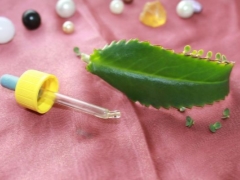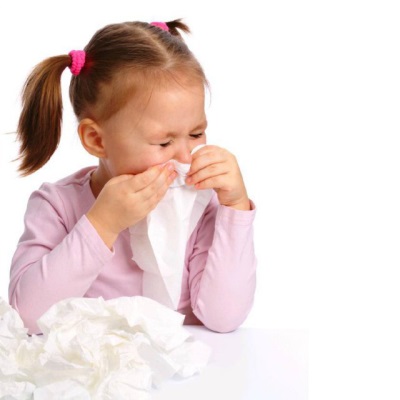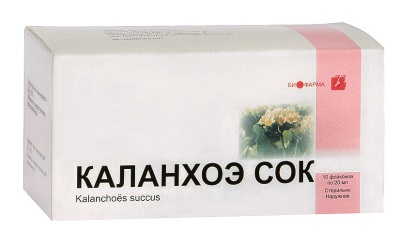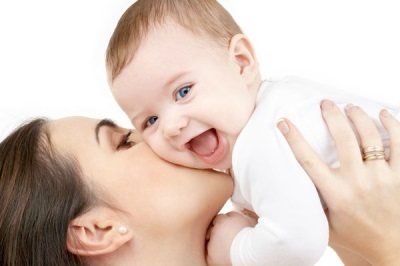Application kolanhoe from a cold to children
When a runny nose appears in a child, the last thing I want is to resort to the use of pharmaceutical synthetic medicines. And so many mothers turn to proven popular recipes. One of the natural remedies used in the treatment of rhinitis has long been Kalanchoe.
What is it?
Kalanchoe grows in nature in Africa, South America and Asia, and in our country it is often grown on window sills as indoor plants. There are more than 200 species of this evergreen plant, but only some of them are used for therapeutic purposes, for example, Cirrus Kalanchoe. The leaves of this plant are rich in vitamin C, tannins, organic acids, flavonoids and various trace elements.
To learn more about the beneficial properties of this unique plant, we recommend watching the following video:
Principle of action and medicinal properties
Kalanchoe with a cold in children has a symptomatic effect. The juice of this plant has anti-inflammatory effect, stimulates the immune system, relieves swelling, has a bacteriostatic and bactericidal effect, helps heal wounds and stop bleeding. The main effect that Kalanchoe has on a cold is stimulation of sneezing, as a result of which the nasal mucosa is cleared and the child becomes easier to breathe.
Indications
The use of Kalanchoe when the child has a head cold is recommended if:
- Other remedies for rhinitis are not available, for example, the child is in the countryside.
- Clear the nose from mucus in a different way does not work.
- Other medicines do not work.
- Parents want to avoid using drugs from the pharmacy.
In addition, bury the juice of this plant should be only in a situation where nasal breathing is completely absent. If the baby is at least slightly able to breathe through the nose, the use of Kalanchoe should be discarded. The plant is shown only with strong edema, blocking the nasal passages, or in the case of complete blockage of air with thick snot.
Contraindications
Kalanchoe is not used in children with:
- Allergic rhinitis and other types of allergies.
- Intolerance to this plant.
- Liver disease.
- Low pressure blood.
How to apply?
In the treatment of rhinitis Kalanchoe The following rules should be followed:
- For juice, choose large sheets of plants over 3 years old, which are cut into pieces and placed in a garlic press. The resulting juice is diluted with water 1 to 1.
- It is recommended to bury the remedy twice a day, 2-3 drops in each nasal passage.
- Juice should be warm (about body temperature).
- Manipulation is not carried out before bedtime.
- Kalanchoe juice bury no more than 5 days in a row.
- If there are any side effects, treatment with Kalanchoe should be stopped.
- If you dripped the juice of this plant to a child and this caused a very strong attack of sneezing, the next time the remedy should be diluted more with water and administered in a lower dose.
- Do not bury a new dose of juice until the sneezing caused by the previous instillation has stopped.
- You can add aloe juice in the same amount to Kalanchoe juice.
- Older children can be wetted with cotton juice Kalanchoe cotton turunda and put them for one or two minutes in each nasal passage.
- With good portability, it is permissible to use Kalanchoe juice and for preventive purposes, burying it several times a day during the ARVI epidemic season.
Features of use for infants and babies
It is important to remember that the treatment of babies younger than a year must be coordinated with the doctor.
A pediatrician will help determine whether a rhinitis is physiological (in this case, no treatment is required) or whether another treatment is required (for example, against allergies).
Using Kalanchoe juice in the treatment of infants, the dosage is reduced to 1 drop in each nasal passage, and the juice itself is diluted with water more (1 to 3). Instead of instillation in the children of the first year of life, you can lubricate the nasal passages with Kalanchoe juice, using cotton swabs.
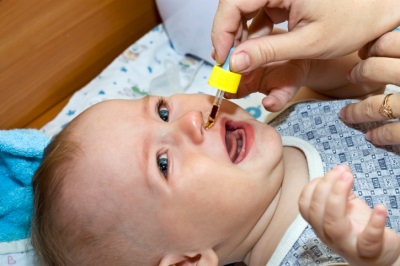
Tips
Before using Kalanchoe juice for the treatment of rhinitis, check the baby's reaction to this plant. Put one drop under the crumbs above the upper lip and rub into the skin. An hour later, check the skin - if there is redness, the use of Kalanchoe should be abandoned. Under normal skin conditions, drip 1 drop of juice into each baby's nostril and wait a bit. If such actions did not lead to deterioration, then you can use Kalanchoe in the recommended dosages.
Instead of self-made kalanchoe juice, you can use a ready-made pharmacy, but pay attention to the composition. Do not bury a child's juice, to which ethyl alcohol is added. Also not recommended homeopathic remedies, because the juice Kalanchoe in these drugs is very small.
Note that a milder effect is different decoction of Kalanchoe. Tearing off a few leaves of the plant, they are poured over 100 ml of water, brought to a boil and allowed to stand for a while. Ostuzhenny broth is recommended to apply at the age of 2 years. Although he has a less pronounced effect than that of juice, but such a tool is safer.
Reviews
Parents who have tried Kalanchoe in the treatment of rhinitis in their children, confirm that the remedy causes severe sneezing, as a result of which excess mucus is quickly removed from the nasal passages and the child’s breathing becomes easier. Some note a negative effect in the form of secondary edema and strong drying of the mucous membrane. Frequent cases of allergies. There are also kids on which the juice Kalanchoe does not have the desired effect.
Doctors treat the treatment of Kalanchoe wary, preferring to turn to more effective and safe means for children. They warn parents that the use of the juice of this plant is rather unpredictable with respect to side effects on the child's body.
